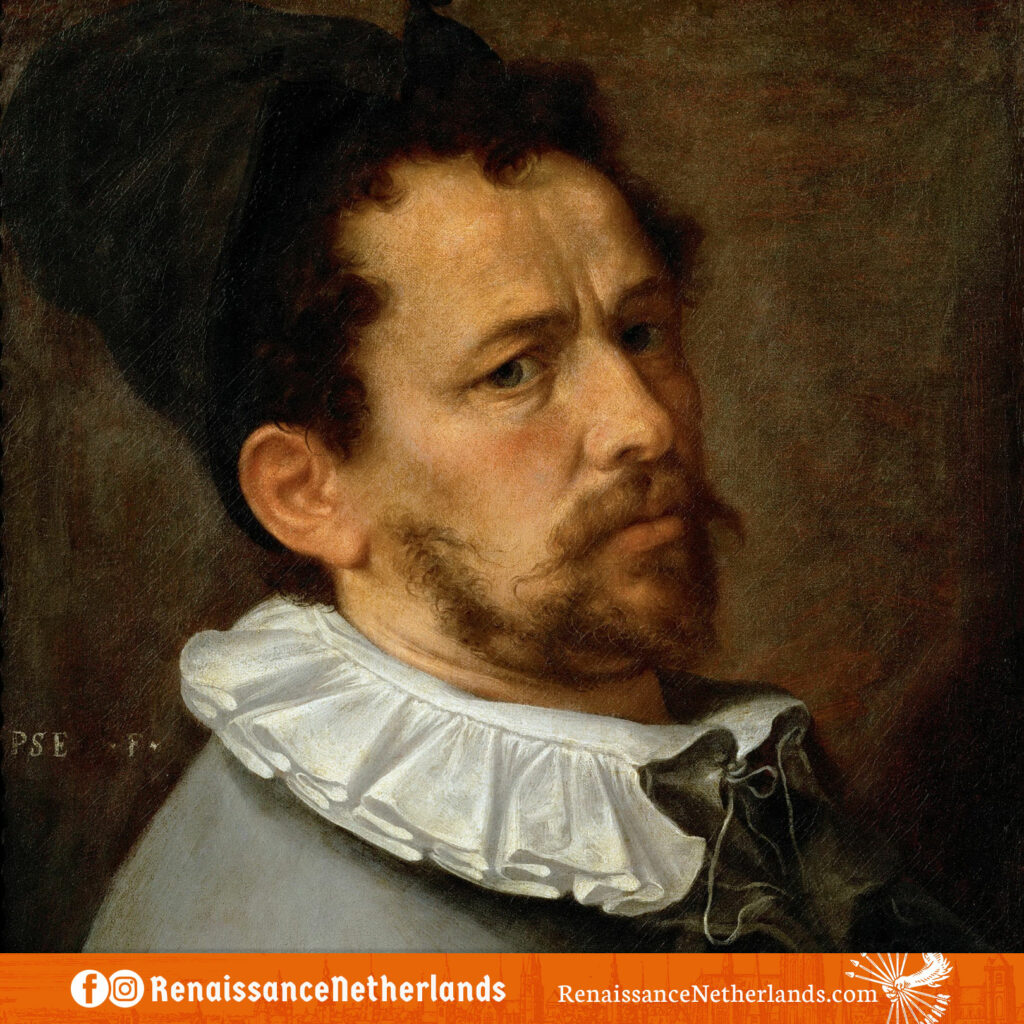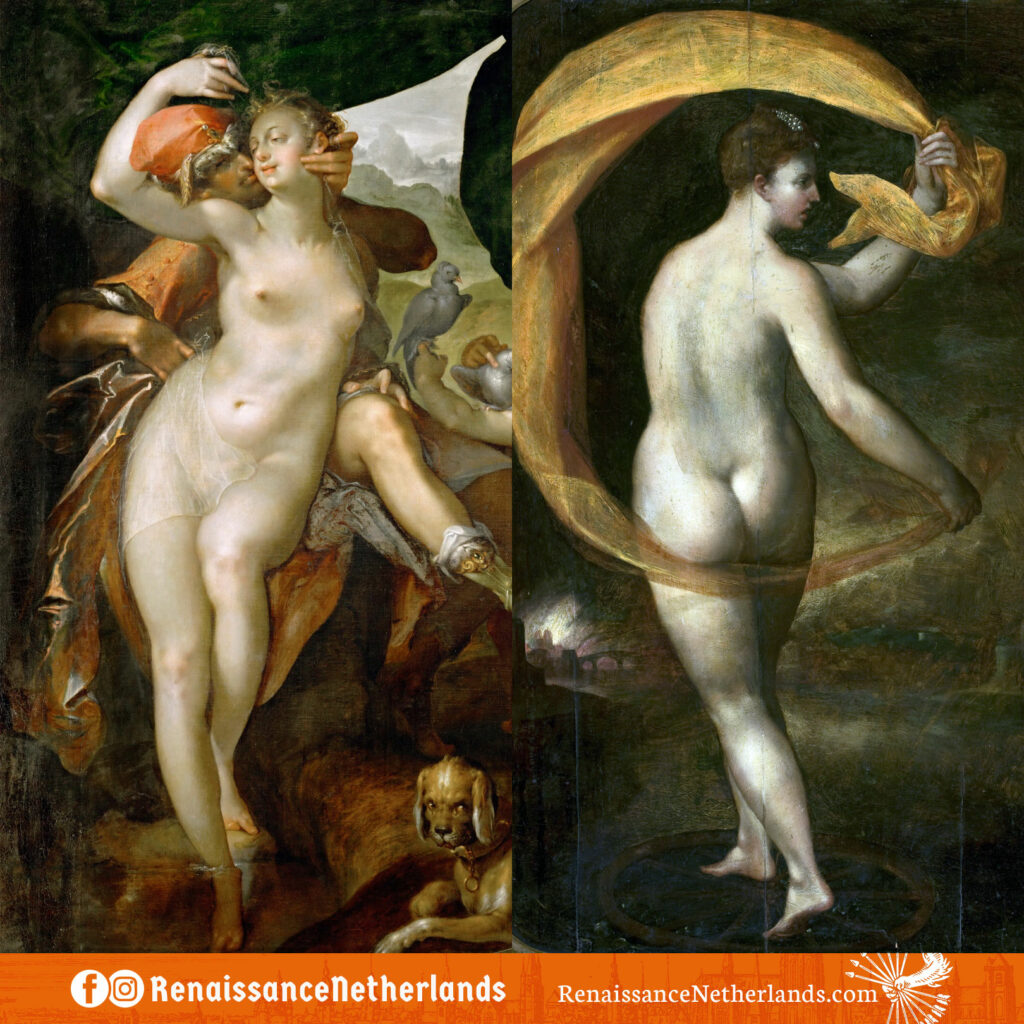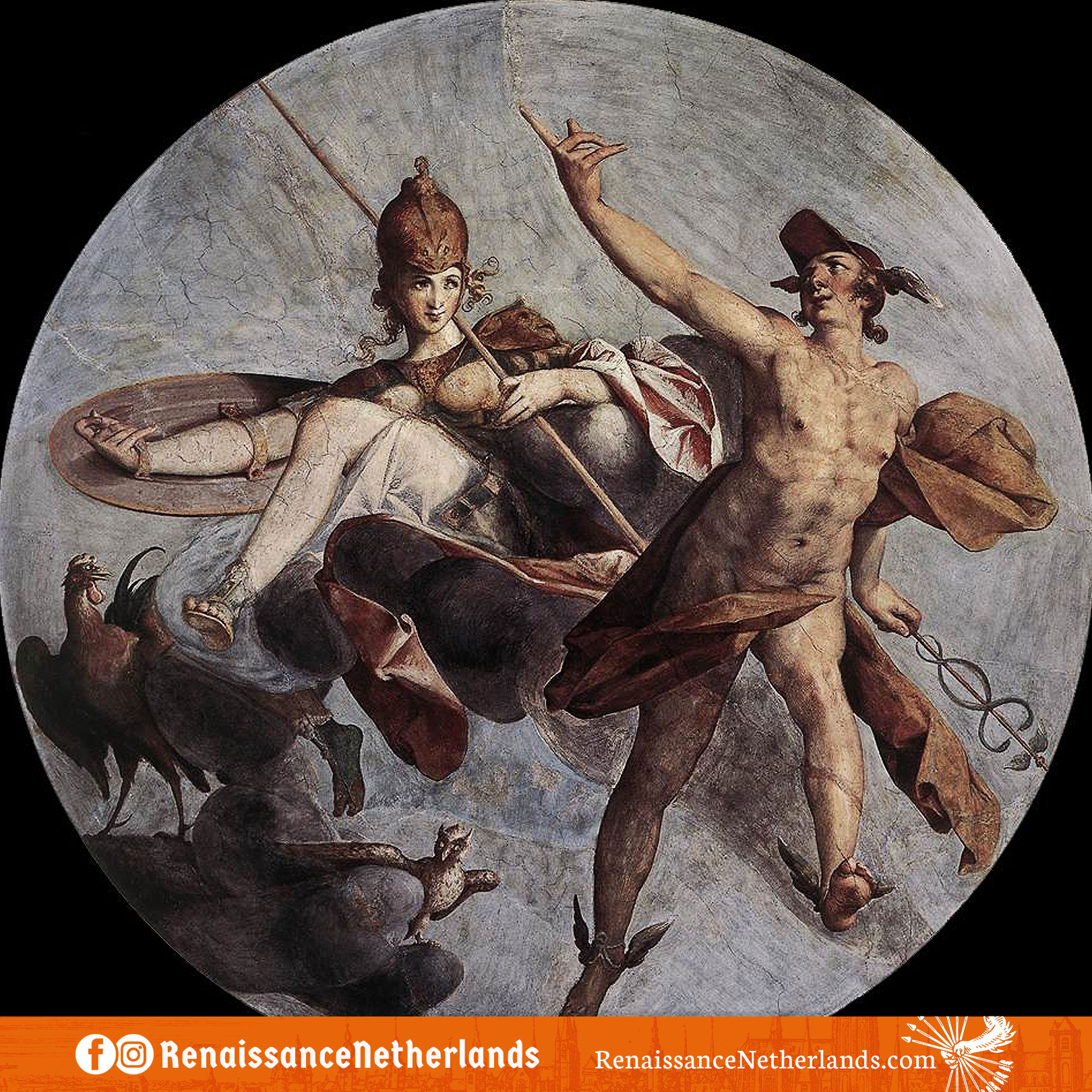Bartholomeus Spranger (1546–1611) was born the third son to an Antwerp merchant family with business ties to both Rome and Tunis in northern Africa. With his older brothers continuing the family business, young Bartholomeus made the most of his chances with art.
As a teenager, he studied in the workshops of various Flemish: Jan Mandijn, Frans Mostaert (shortly before his death), and Cornelis van Dalem.
With that foundation, he left Antwerp in 1565 (as political and religious tensions were rising). After a brief stop in Paris, he made his way to Italy, where good fortune would soon find him.

He worked from Milan to Parma to Rome (where he would meet Karel van Mander, who would later include Spranger in his famous Schilder-boeck), where he would master the fanciful Mannerist style then in vogue. There, he was appointed court painter to Pope Pius V. This was 1570; Spranger was just in his early twenties!
From there, his connections and knack for recognizing popular trends in art served him well. Two Holy Roman Emperors, Maximillian II and his son Rudolf II, would keep Spranger employed and well-paid in their courts at Vienna and Prague.
The Flemish artist became a wealthy celebrity in the process. His works were sensual – bordering on pornographic, even – and remarkable examples of the Northern Mannerist style popular in mid-late sixteenth century Prague, France, and Spranger’s homeland of the Low Countries.

Spranger would marry the daughter of a wealthy Prague family in 1582. Sadly – as was frequent in the era – their children would all die before adulthood. Christina herself would pass away more than a decade before Bartholomeus in 1600.
In his lifetime, Spranger’s work was widely popular, capturing the very essence of trends and fashions. Perhaps his close adherence to the Mannerist zeitgeist has not served him as well in the eyes of posterity, as his memory has been eclipsed by other painters.
Yet he remains as not only a master of the Mannerist style of his time, but another example of how artists from the Low Countries transcended their local markets and styles to work across the whole of Europe.
The world was a small place, even 450 years ago.
Selected Sources
Aubry C. Garner, Transmutation and Metamorphosis through the Work of Bartholomeus Spranger and the Patronage of Rudolf II
http://rave.ohiolink.edu/etdc/view?acc_num=ohiou1462534898
Sally Metzler, Bartholomeus Spranger: Splendor and Eroticism in Imperial Prague
https://www.metmuseum.org/art/metpublications/Bartholomeus_Spranger_Splendor_and_Eroticism_in_Imperial_Prague
J Woodall, D Meijers, F Scholten, Art and Migration: Netherlandish Artists on the Move 1400-1750
https://brill.com/view/title/25277
